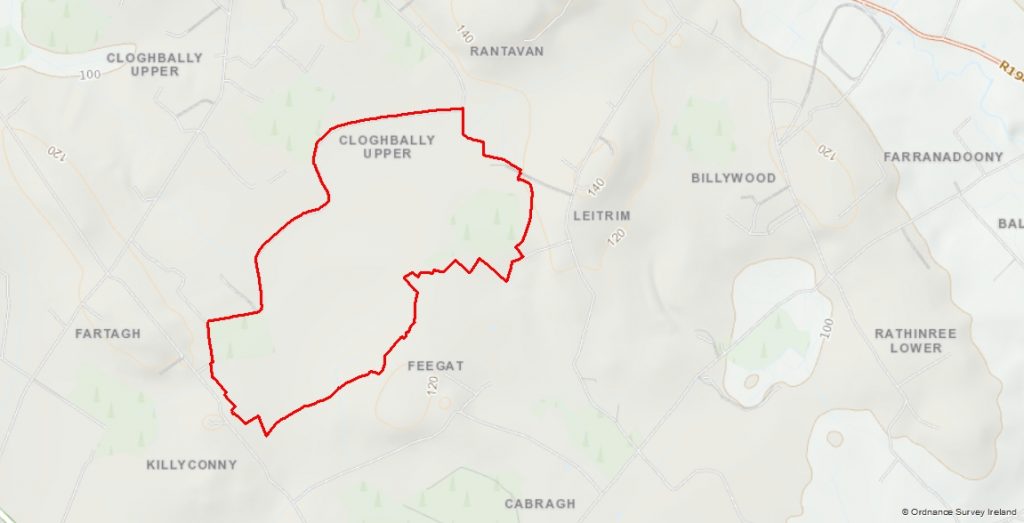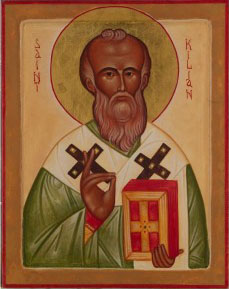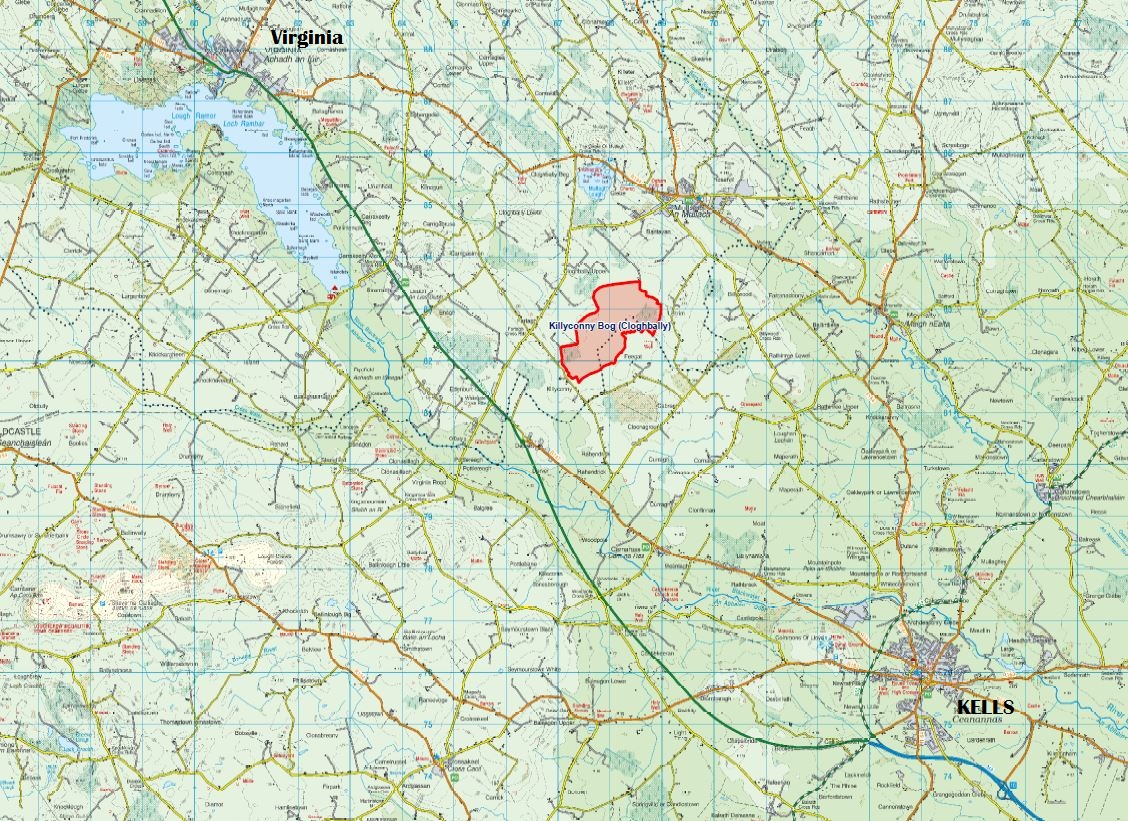History
FORMATION OF THE BOG
Killyconny Bog formed when the climate conditions were moist as the glaciers and ice retreated westwards. Chalk like marl formed at the bottom of two small basins or lakes, and dead plants began forming layers of fen peat which eventually filled the lakes which gradually filled in and grew together over a low drumlin ridge. After the Fen stage the bog continued to grow – its water content 95% – to become a raised bog. Killyconny was very wet throughout at one stage, with many areas of pool and hummock formations. Drainage and cutting has affected these.
Approx 4,500 years ago, the average rainfall in Cavan decreased and this caused the bogland to dry out somewhat. This lead to the establishment of pine woodland in the area which existed for about 500 years until the climate became wetter and the bog began to grow again. These trees were found in Killyconny when turf cutting reached a certain depth.
A bog will grow by 1mm a year and with peat depth being, on average, 10m in Killyconny this dates it as being 10,000 years old.
Cutting on the bog can be traced back to pre-famine times, and it is said locally that the bog would have extended to the road that is at the edge of the bog.

Killyconny bog was a part of the Headfort estate. Lord Headfort vested the areas of Cloughbally and Fartagh in a number of Trustees in March 1921. The bog was vested with this group to be held for the benefit of landowners in the area. The areas of Leitrim, Killyconny and Ferat were divided by the Land Commission among farmers in the locality.
The history of the bog and the traditions associated with human interactions with the bog were celebrated in some style on Killyconny over the years, with ‘Mullagh Bog Day’ an annual event in the 1990’s, allowing locals and visitors alike a chance to relive a day on the bog. See Local and Community Page for more on this.
ST KILIAN

The bog has links to the story of St Kilian, who converted much of Germany to Christianity and is held in the same breath there as St Patrick is back in Ireland. A Holy Well was recorded alongside the bog in old 18th Century maps, but has since disappeared from modern maps. St Kilian’s own well is in Longfield, n the other side of Mullagh town, and on his Feast Day, July 8, crowds flock to the well for devotions.
St Kilian’s Heritage Centre was built by the local community in association with the Diocese of Würzburg in southern Germany, and opened in 1995. The centre features many relics and replicas of the saint and is one of the most popular community and tourism facilities in the north-east.
A well-stocked exhibition area opens on to a small theatre where one may view a short film on the life of St. Kilian.
The Centre also houses a craft shop packed with artistic items of interest, books and a range of locally produced work. Adjoining the craft shop is a comfortable dining area, and if the weather is with you, there is an outside picnic area.
The Centre is owned and managed by the Saint Kilian’s Heritage Trust, and came about after much hard work locally to to develop the Mullagh – Würzburg links which dates back to the 7th Century.
The area was popular with German visitors tracing their spiritual roots, and they were being catered for in a local school General Purpose room.
In 1986, the St. Kilian Committee was set up to develop the Mullagh – Würzburg links and cater for the official Würzburg tours visiting Mullagh.
St. Kilian’s Well at Longfield was restored, a limestone statue was commissioned for the grounds of St. Kilian’s Church, and in 1989 bonds were strengthened when the first official tour group from Mullagh, comprising of 90 people, visited Würzburg for the 13th Centenary of St. Kilian’s Martyrdom. Around the same time, a special St. Kilian Stamp was issued by the German and Irish Governments on the same day to mark the 13th Centenary. A limewood statue of St. Kilian, commissioned by a member of the Bavarian Parliament, Herr Christian Will, was presented to St. Kilian’s Church.
In 1991, a first class relic of St. Kilian (a bone splinter) was brought back to Mullagh by the Bishop of Würzburg amid great celebrations. It is housed in a special Reliquary provided in St. Kilian’s Church.
That same year, the plans for the St. Kilian’s Heritage Centre were drawn up and a successful application was made to the International Fund for Ireland for grant aid.
In 1992, the restoration of Teampaill Cheallaigh Cemetery was undertaken and the ruins of the Medieval Church of St. Kilian were secured and preserved. This important site is referred to in a letter in the archives of Propaganda in Rome, dated 27th September 1715.

St Kilian’s Heritage Centre in Mullagh, which attracts thousands of visitors every year since it was opened in 1995.
In 1993, work on the Heritage Centre commenced and St. Kilian’s Trust was set up to build and run it. It was completed and officially opened by President Mary Robinson on the 7th May 1995.
The main part of the exhibition was prepared in Würzburg and was donated to the centre by the Würzburg Diocese.The centre is open all-year round and for more information, check out its webpage: http://stkiliansheritagecentre.ie

